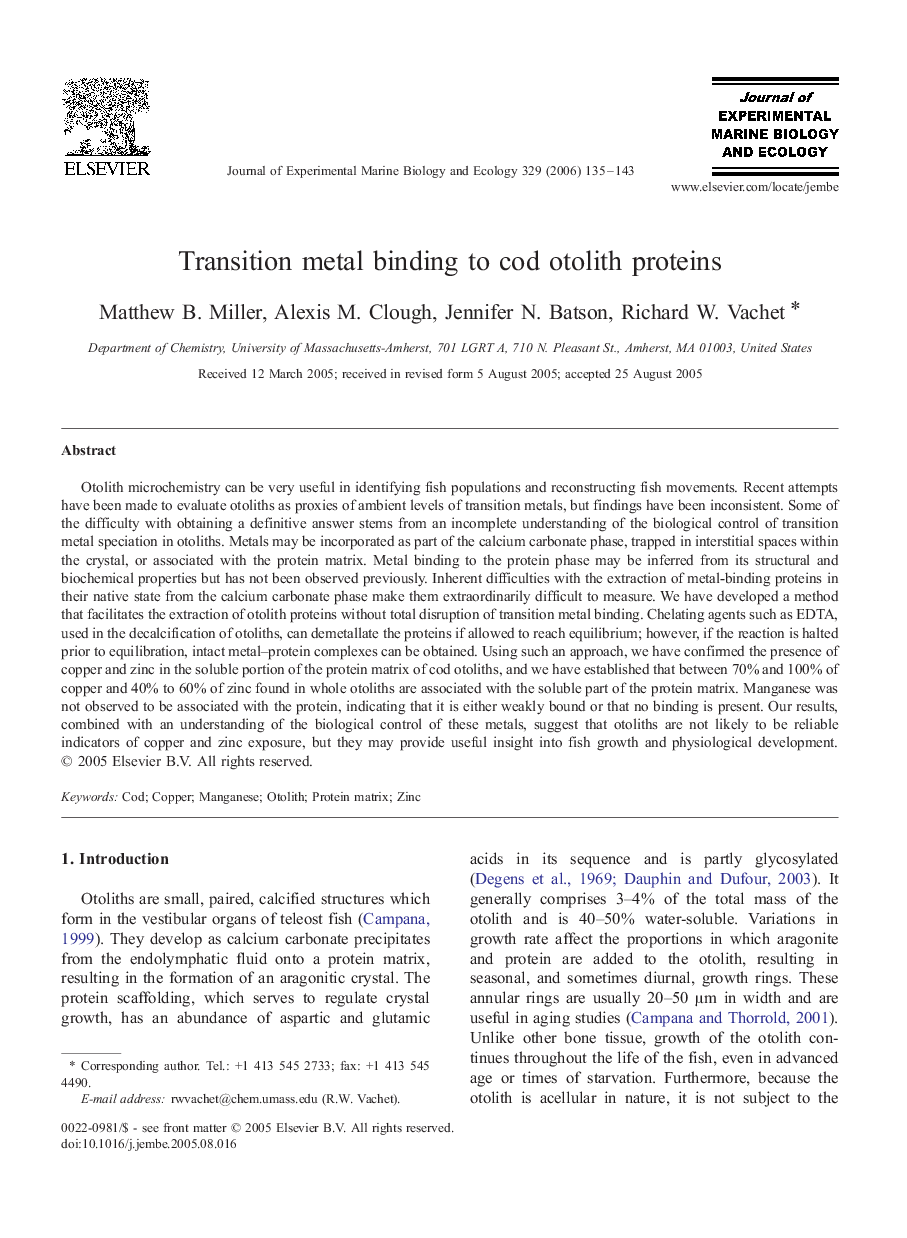| کد مقاله | کد نشریه | سال انتشار | مقاله انگلیسی | نسخه تمام متن |
|---|---|---|---|---|
| 4398265 | 1305934 | 2006 | 9 صفحه PDF | دانلود رایگان |

Otolith microchemistry can be very useful in identifying fish populations and reconstructing fish movements. Recent attempts have been made to evaluate otoliths as proxies of ambient levels of transition metals, but findings have been inconsistent. Some of the difficulty with obtaining a definitive answer stems from an incomplete understanding of the biological control of transition metal speciation in otoliths. Metals may be incorporated as part of the calcium carbonate phase, trapped in interstitial spaces within the crystal, or associated with the protein matrix. Metal binding to the protein phase may be inferred from its structural and biochemical properties but has not been observed previously. Inherent difficulties with the extraction of metal-binding proteins in their native state from the calcium carbonate phase make them extraordinarily difficult to measure. We have developed a method that facilitates the extraction of otolith proteins without total disruption of transition metal binding. Chelating agents such as EDTA, used in the decalcification of otoliths, can demetallate the proteins if allowed to reach equilibrium; however, if the reaction is halted prior to equilibration, intact metal–protein complexes can be obtained. Using such an approach, we have confirmed the presence of copper and zinc in the soluble portion of the protein matrix of cod otoliths, and we have established that between 70% and 100% of copper and 40% to 60% of zinc found in whole otoliths are associated with the soluble part of the protein matrix. Manganese was not observed to be associated with the protein, indicating that it is either weakly bound or that no binding is present. Our results, combined with an understanding of the biological control of these metals, suggest that otoliths are not likely to be reliable indicators of copper and zinc exposure, but they may provide useful insight into fish growth and physiological development.
Journal: Journal of Experimental Marine Biology and Ecology - Volume 329, Issue 1, 7 February 2006, Pages 135–143